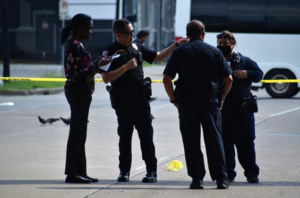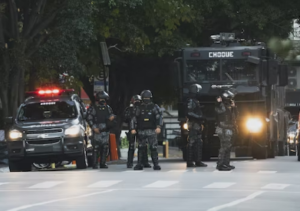Active shooter incidents are chaotic and high-stress situations that demand a coordinated response from law enforcement. Nearly without fail, an active shooter will draw officers from nearly every agency in the region. In these scenarios, the presence of self-deploying officers—those who arrive on the scene without being officially dispatched—can both aid and complicate the response efforts. This newsletter provides insights and strategies to effectively manage self-deploying officers to ensure a unified, efficient, and safe response.
The Challenges of Self-Deployment
Self-deploying officers can be motivated by a strong desire to help and protect. In many cases, their efforts are essential to resolving a critical incident. However, their presence can lead to several challenges:
- Communication Breakdown: Unplanned arrivals can disrupt established communication channels, leading to confusion and potential misinformation.
- Command and Control Issues: Self-deploying officers might not be aware of the current incident command structure, causing potential clashes and misaligned efforts.
- Safety Risks: Without proper briefings, these officers might not have crucial information about the threat, increasing the risk to themselves and others.
Strategies for Managing Self-Deploying Officers
1. Pre-Incident Training and Policies
-
- Clear Protocols: Establish and communicate clear protocols regarding self-deployment. Officers should understand the importance of waiting for official deployment unless absolutely necessary.
- Training Exercises: Incorporate scenarios involving self-deploying officers into regular training exercises. This helps everyone understand the potential impacts and how to manage them.
2. On-Scene Management
-
- Staging Areas: Designate specific staging areas where self-deploying officers can report. This helps integrate them into the command structure in an organized manner.
- Liaison Officers: Assign liaison officers at staging areas to brief self-deploying officers on the situation, ensure they are properly equipped, and assign them roles within the incident command system.
3. Communication Strategies
-
- Unified Communications: Ensure that all responding officers, including self-deploying ones, have access to the same communication channels. This minimizes the risk of misinformation and enhances coordination.
4. Integration into Command Structure
-
- Incident Command System (ICS): Make sure self-deploying officers are familiar with the ICS and understand where they fit within the structure upon arrival.
- Role Assignments: Quickly assign roles to self-deploying officers that complement the existing response efforts. This might include perimeter security, traffic control, or supporting primary response teams.
Post-Incident Review
After an incident, conduct a thorough review that includes an assessment of how self-deploying officers were managed. This should involve:
- Debriefings: Hold debriefings with all involved personnel to gather feedback and identify areas for improvement.
- Policy Adjustments: Use the insights gained to adjust policies and protocols to better handle self-deployments in future incidents.
- Training Updates: Update training programs to address any gaps identified during the incident.
While self-deploying officers bring valuable skills and intentions to active shooter incidents, managing their presence is crucial to maintaining a coordinated and effective response. By establishing clear protocols, enhancing communication, and integrating these officers into the command structure, agencies can ensure that all efforts are unified and directed toward resolving the incident safely and efficiently.


